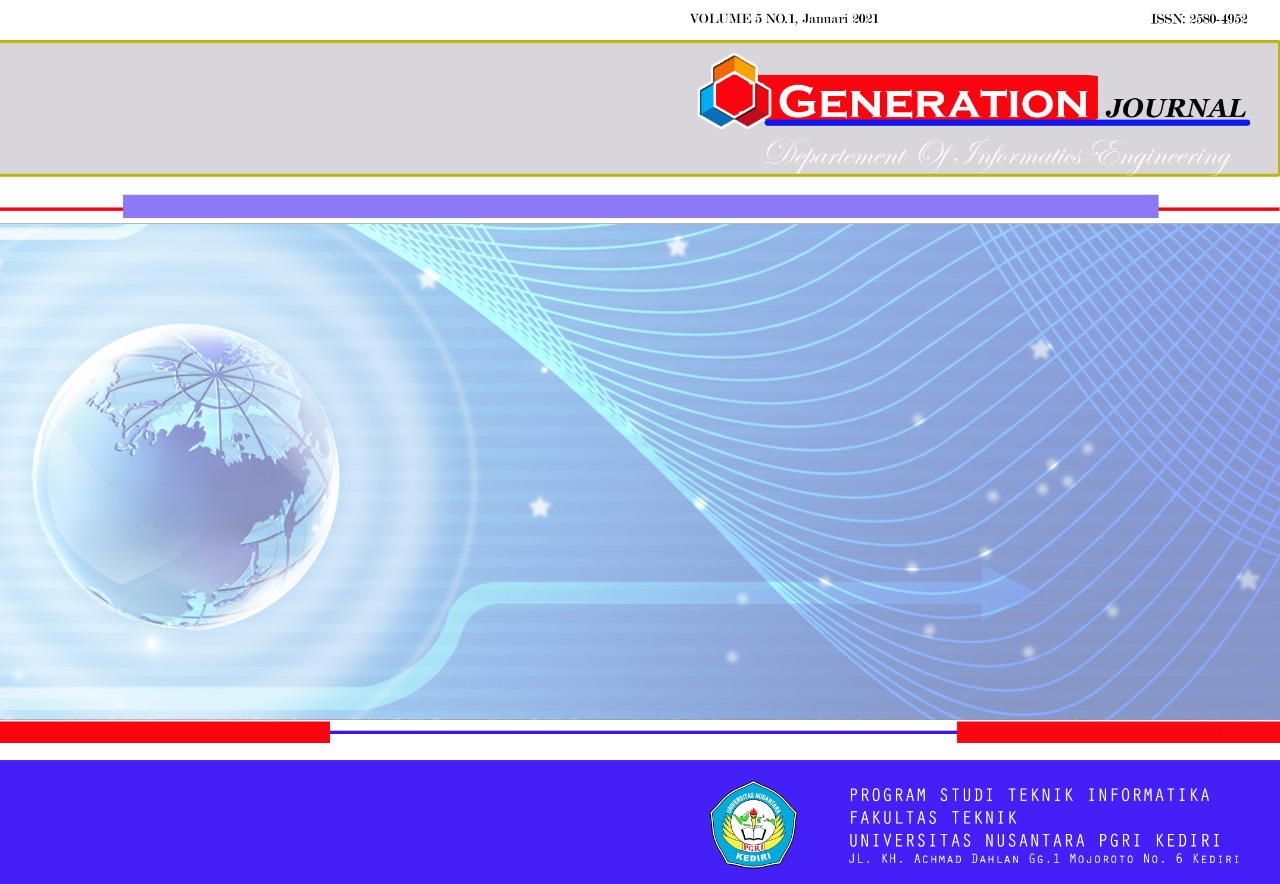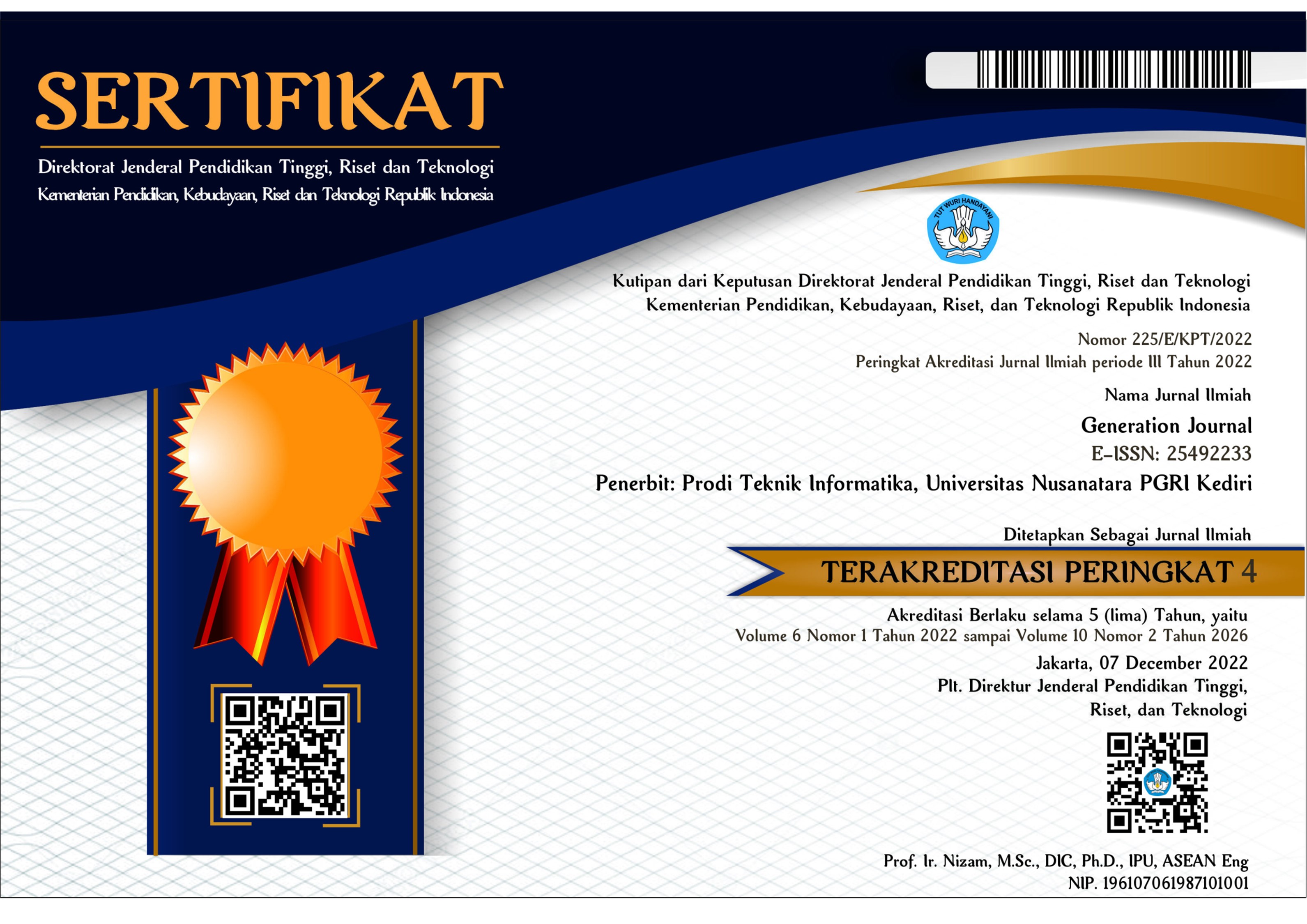Penerapan RAD pada Aplikasi E-Learning Lembaga Bimbingan Belajar Gold Generation
DOI:
https://doi.org/10.29407/gj.v5i1.14574Keywords:
education, e-learning, tryout, task resultAbstract
The development of information and technology has helped people to do their activity. In future living, information and technology will be the most dominant sector. Technology takes part in most of the aspects such education. Technology’s role is urgently needed, the example is Gold Generation Tutoring Agency as their service quality improvement. During this time tryout and tasks is done in a paper and not recorded on a database. It complicates the agency officers to manage the students’ grade and their tasks. And tutors find themselves in difficult situation in monitoring their students. Another popular name at the moment is E-Learning, it is one of learning process models that utilize media of information and technology communication especially internet. By the existence of e-learning that is directly connected to a database will ease the admin and the officers of the tutoring agency to manage the students grade and correct their task results, and not only for better service, but also for easing the students with lesson materials. According to the things mentioned above, "Web-based E-Learning Application of Gold Generation Tutoring agency" is made. This application is expected to help in managing students grade and correcting their tasks in Gold Generation Agency
References
Muthmainnah, Fajriana, and D. Siska, “Pemanfaatan Teknologi Informasi Untuk Meningkatkan Kualitas Pembelajaran,” TECHSI - J. Tek. Inform., vol. 9, no. 2, pp. 65–77, 2017.
Musrifah, “Implementasi Teknologi Informasi Menggunakan Human Organization Technology (HOT) Fit Model Di Perpustakaan Perguruan Tinggi,” J. Ilmu Perpust. dan Inf., vol. 2, no. 2, pp. 222–242, 2017.
D. Ariani, “Komponen Pengembangan E-Learning,” J. Pembelajaran Inov., vol. 1, no. 1, pp. 58–64, 2018.
D. Citereup, “Pemanfaatan Teknologi Informasi Dan Komunikasi Dalam Pembelajaran Bagi Para Guru Smpn 2 Kawali Desa Citeureup Kabupaten Ciamis,” vol. 4, no. 1, pp. 59–62, 2015.
A. Sanova, “Learning Management System (LMS) Sebagai Aplikasi Pengembangan Materi Interaktif Pokok Bahasan Daur Biogeokimia Berbasis Computer Assisted Instruction.,” Chempublish J., vol. 3, no. 1, pp. 21–31, 2018.
P. Permana, “Efektivitas Penerapan Learning Management System (Lms) Dalam Meningkatkan Kemampuan Menulis Mahasiswa Bahasa Jerman,” Allemania, vol. 2, no. 2, pp. 136–151, 2013.
N. S. Hanum, “Keefetifan e-learning sebagai media pembelajaran (studi evaluasi model pembelajaran e-learning SMK Telkom Sandhy Putra Purwokerto),” J. Pendidik. Vokasi, vol. 3, no. 1, pp. 90–102, 2013.
U. N. Medan, “Layanan Pembelajaran Berbasis E-Learning,” Maj. Ilm. Pembelajaran, vol. 6, no. 2, 2009.
S. Aswati and Y. Siagian, “Model Rapid Application Development Dalam Rancang Bangun Sistem Informasi Pemasaran Rumah (Studi Kasus : Perum Perumnas Cabang Medan,” Sesindo, pp. 317–324, 2016.
A. Rini and Fatmariani, “Penerapan Metode RAD Pada Sistem Pengajuan Pengambilan Data Penelitian Bankesbangpol Kota Palembang,” J. TI Atma Luhur, vol. 4, no. 1, pp. 1–12, 2017.
H. Hasanah, “TEKNIK-TEKNIK OBSERVASI (Sebuah Alternatif Metode Pengumpulan Data Kualitatif Ilmu-ilmu Sosial),” At-Taqaddum, vol. 8, no. 1, p. 21, 2017.
L. N. Hakim, “Ulasan Metodologi Kualitatif: Wawancara Terhadap Elit,” Aspir. J. Masal. Sos., vol. 4, no. 2, pp. 165–172, 2013.
A. Maddeppungeng, I. Suryani, and M. Iskandar, “GEDUNG ADMINISTRASI UNIVERSITAS PENDIDIKAN INDONESIA ( UPI ) KAMPUS SERANG MENGGUNAKAN METODE WORK BREAKDOWN STRUCTURE ( WBS ) DAN KURVA-S,” vol. 4, no. 1, 2015.
M. H. P. Swari and L. P. R. Sugiharto, “Rancang Bangun Media Pembelajaran E-Learning Di Sma Muhammadiyah 1 Denpasar, Bali,” J. Teknol. Inf. dan Komput., vol. 5, no. 1, 2019.
Downloads
Published
Issue
Section
License
Authors who publish with this journal agree to the following terms:
- Copyright on any article is retained by the author(s).
- The author grants the journal, the right of first publication with the work simultaneously licensed under a Creative Commons Attribution License that allows others to share the work with an acknowledgment of the work’s authorship and initial publication in this journal.
- Authors are able to enter into separate, additional contractual arrangements for the non-exclusive distribution of the journal’s published version of the work (e.g., post it to an institutional repository or publish it in a book), with an acknowledgment of its initial publication in this journal.
- Authors are permitted and encouraged to post their work online (e.g., in institutional repositories or on their website) prior to and during the submission process, as it can lead to productive exchanges, as well as earlier and greater citation of published work.
- The article and any associated published material is distributed under the Creative Commons Attribution-ShareAlike 4.0 International License














